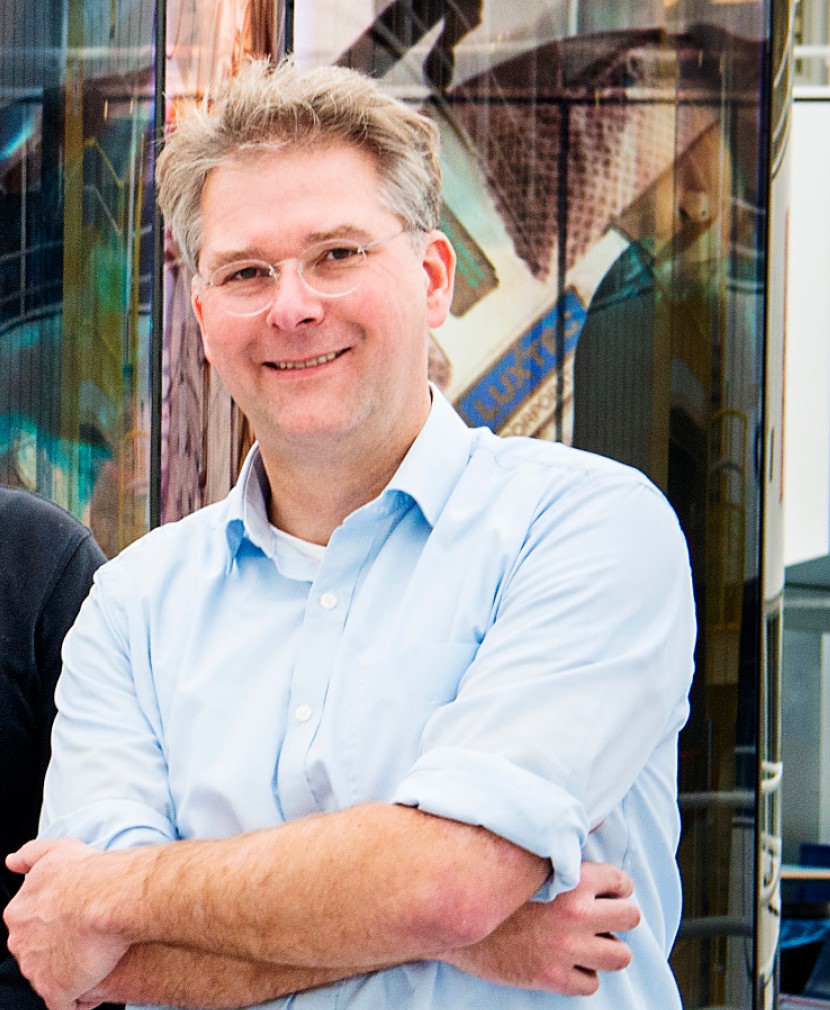“I will never become a true Maastrichtian, but I feel more at home here than anywhere else.”

For over 17 years Dr. Bekkers is a cardiologist at Maastricht UMC+, specialized in the field of non-invasive cardiovascular imaging. Currently he is also acting chief of the department cardiology. Dr. Bekkers started his education to become a medical doctor in 1986 in Maastricht. Later he also met his wife there and both his children were born in Maastricht. When he graduated in 1993 they moved to Huizen, a city located near Amsterdam. But it didn’t take him long to move back to the beautiful city of Maastricht to continue his further training and specialize as a cardiologist in the Maastricht UMC+, where he has been an official staff member since 2003.
“Cardiology in Maastricht is historically well known worldwide, especially within the spearhead cardiac arrhythmias” says Dr. Bekkers full of confidence. “This is one of the reasons why I am very proud to work here. Maastricht is a very friendly and beautiful city. It is an un-Dutch city located in the beautiful area of Southern Limburg. I have been living here for 25 years now, but I still have a feeling of being on vacation in my hometown.”
In addition to the Burgundian atmosphere that Maastricht is known for, the international character of Maastricht is extremely appealing to Dr. Bekkers. The Maastricht University is a young and international university, with 52% international students. “When you walk around the city you hear a lot of foreign languages. This international character also creates an opening to the surrounding German and Belgian regions that have beautiful hiking and cycling trails.”
Dr. Bekkers is a general cardiologist and involved in the Marfan expertise center of Maastricht UMC+. As mentioned earlier, he is also specialized in non-invasive cardiovascular imaging. But what exactly does this mean? We asked Dr. Bekkers. “A patient consultation always starts with thorough history taking and anamnesis, followed by physical examination, electrocardiogram and sometimes a blood test when indicated. Advanced imaging techniques such as high-end echocardiography, computed tomography and magnetic resonance imaging allow us to ‘see inside’ the body without opening it. These techniques allow us to image the heart and blood vessels in more detail and help us to make more reliable and accurate cardiac diagnoses. This is important to initiate the most appropriate and tailored therapy for our patients and improve their quality of life and prognosis. In addition, follow-up imaging is often used to determine whether the initiated therapy is successful or a change in management is needed. Because of their increased complexity, in depth knowledge of these advanced imaging techniques is crucial, which has resulted in a sub-specialty in cardiology.”
Dr. Bekkers is also actively involved in cardiovascular research. His main interests lie in the appropriate use of non-invasive imaging techniques in patients with acute chest pain, myocardial infarction and thoracic aortic aneurysms. He recently published a study that demonstrated that early implementation of non-invasive imaging in patients with acute chest pain reduces the number of inappropriate invasive coronary angiographies (CARMENTA trial). The results were published in a renown and high-impact international medical journal and have received attention on (inter)national scientific web-based platforms, in newspapers and regional broadcastings. The department of cardiology of the Maastricht UMC+ in general is at the forefront of science at a global scale, particularly in relation to its two spearheads ‘cardiac arrhythmias’ and ‘cardiomyopathies’. This successful research output is also explained by the strong and fruitful collaboration between clinical cardiology and its university counterpart and one of the largest cardiovascular research institutes in Europe, Cardiovascular Research Institute Maastricht (CARIM).
Dr. Bekkers himself visits one to two conferences each year. This is very important to him because of education, creative thinking and socializing. “You can perfectly network at a conference, especially when the local atmosphere and circumstances are good. You meet interesting colleagues who contribute to new research ideas and expand existing knowledge. A conference is the perfect platform and moment to share thoughts with colleagues worldwide.” Of course, we asked Dr. Bekkers why he thinks Maastricht is the perfect conference destination. “I really think Maastricht has a lot to offer as a conference destination. The great thing about Maastricht as a conference destination is that it’s a very compact and well-arranged city with an extremely friendly atmosphere. From the convention center you can easily walk to the city center along the river Maas. Besides that, Maastricht is a very un-Dutch city with good restaurants, bars and there’s also a lot to experience in the surrounding region.”
The Maastricht Convention Bureau (MCB) is heavily involved in many congresses that take place in Maastricht. We asked Dr. Bekkers about his experience with MCB. “I think the MCB is an extremely important and valuable organization and I have always enjoyed working with them. Working together with MCB has always been a pleasant experience”.
